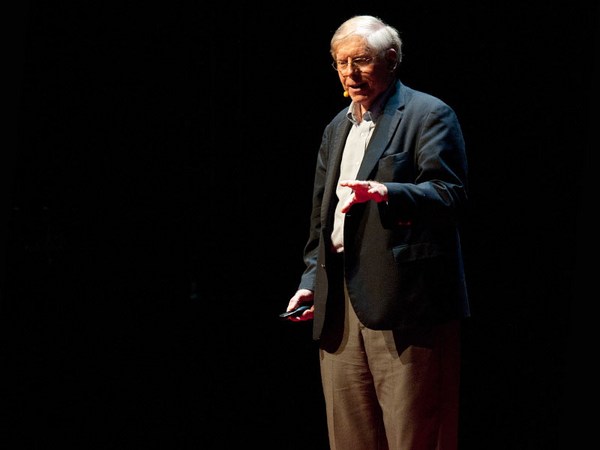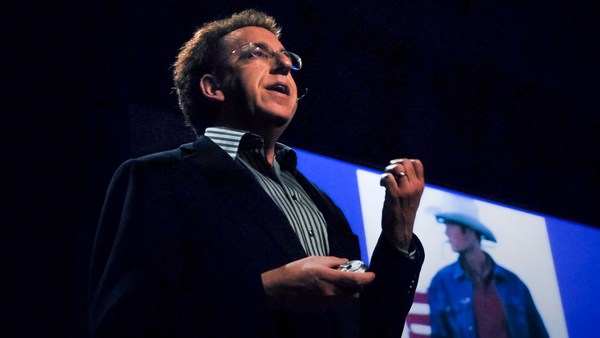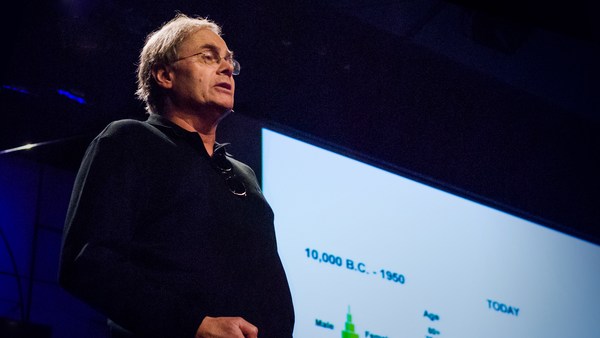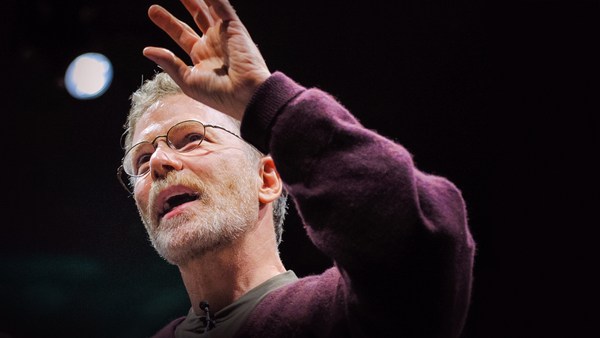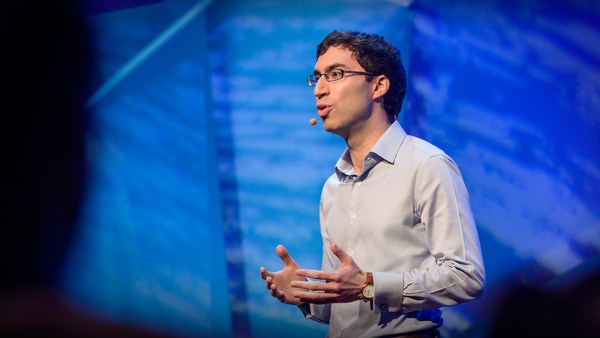Approximately 30 years ago, when I was in oncology at the Children's Hospital in Philadelphia, a father and a son walked into my office and they both had their right eye missing, and as I took the history, it became apparent that the father and the son had a rare form of inherited eye tumor, retinoblastoma, and the father knew that he had passed that fate on to his son.
That moment changed my life. It propelled me to go on and to co-lead a team that discovered the first cancer susceptibility gene, and in the intervening decades since then, there has been literally a seismic shift in our understanding of what goes on, what genetic variations are sitting behind various diseases. In fact, for thousands of human traits, a molecular basis that's known for that, and for thousands of people, every day, there's information that they gain about the risk of going on to get this disease or that disease.
At the same time, if you ask, "Has that impacted the efficiency, how we've been able to develop drugs?" the answer is not really. If you look at the cost of developing drugs, how that's done, it basically hasn't budged that. And so it's as if we have the power to diagnose yet not the power to fully treat. And there are two commonly given reasons for why that happens. One of them is it's early days. We're just learning the words, the fragments, the letters in the genetic code. We don't know how to read the sentences. We don't know how to follow the narrative. The other reason given is that most of those changes are a loss of function, and it's actually really hard to develop drugs that restore function.
But today, I want us to step back and ask a more fundamental question, and ask, "What happens if we're thinking about this maybe in the wrong context?" We do a lot of studying of those who are sick and building up long lists of altered components. But maybe, if what we're trying to do is to develop therapies for prevention, maybe what we should be doing is studying those who don't get sick. Maybe we should be studying those that are well. A vast majority of those people are not necessarily carrying a particular genetic load or risk factor. They're not going to help us. There are going to be those individuals who are carrying a potential future risk, they're going to go on to get some symptom. That's not what we're looking for. What we're asking and looking for is, are there a very few set of individuals who are actually walking around with the risk that normally would cause a disease, but something in them, something hidden in them is actually protective and keeping them from exhibiting those symptoms?
If you're going to do a study like that, you can imagine you'd like to look at lots and lots of people. We'd have to go and have a pretty wide study, and we realized that actually one way to think of this is, let us look at adults who are over 40 years of age, and let's make sure that we look at those who were healthy as kids. They might have had individuals in their families who had had a childhood disease, but not necessarily. And let's go and then screen those to find those who are carrying genes for childhood diseases.
Now, some of you, I can see you putting your hands up going, "Uh, a little odd. What's your evidence that this could be feasible?" I want to give you two examples.
The first comes from San Francisco. It comes from the 1980s and the 1990s, and you may know the story where there were individuals who had very high levels of the virus HIV. They went on to get AIDS. But there was a very small set of individuals who also had very high levels of HIV. They didn't get AIDS. And astute clinicians tracked that down, and what they found was they were carrying mutations. Notice, they were carrying mutations from birth that were protective, that were protecting them from going on to get AIDS. You may also know that actually a line of therapy has been coming along based on that fact. Second example, more recent, is elegant work done by Helen Hobbs, who said, "I'm going to look at individuals who have very high lipid levels, and I'm going to try to find those people with high lipid levels who don't go on to get heart disease." And again, what she found was some of those individuals had mutations that were protective from birth that kept them, even though they had high lipid levels, and you can see this is an interesting way of thinking about how you could develop preventive therapies.
The project that we're working on is called "The Resilience Project: A Search for Unexpected Heroes," because what we are interested in doing is saying, can we find those rare individuals who might have these hidden protective factors? And in some ways, think of it as a decoder ring, a sort of resilience decoder ring that we're going to try to build. We've realized that we should do this in a systematic way, so we've said, let's take every single childhood inherited disease. Let's take them all, and let's pull them back a little bit by those that are known to have severe symptoms, where the parents, the child, those around them would know that they'd gotten sick, and let's go ahead and then frame them again by those parts of the genes where we know that there is a particular alteration that is known to be highly penetrant to cause that disease.
Where are we going to look? Well, we could look locally. That makes sense. But we began to think, maybe we should look all over the world. Maybe we should look not just here but in remote places where their might be a distinct genetic context, there might be environmental factors that protect people. And let's look at a million individuals.
Now the reason why we think it's a good time to do that now is, in the last couple of years, there's been a remarkable plummeting in the cost to do this type of analysis, this type of data generation, to where it actually costs less to do the data generation and analysis than it does to do the sample processing and the collection. The other reason is that in the last five years, there have been awesome tools, things about network biology, systems biology, that have come up that allow us to think that maybe we could decipher those positive outliers.
And as we went around talking to researchers and institutions and telling them about our story, something happened. They started saying, "This is interesting. I would be glad to join your effort. I would be willing to participate." And they didn't say, "Where's the MTA?" They didn't say, "Where is my authorship?" They didn't say, "Is this data going to be mine? Am I going to own it?" They basically said, "Let's work on this in an open, crowd-sourced, team way to do this decoding."
Six months ago, we locked down the screening key for this decoder. My co-lead, a brilliant scientist, Eric Schadt at the Icahn Mount Sinai School of Medicine in New York, and his team, locked in that decoder key ring, and we began looking for samples, because what we realized is, maybe we could just go and look at some existing samples to get some sense of feasibility. Maybe we could take two, three percent of the project on, and see if it was there. And so we started asking people such as Hakon at the Children's Hospital in Philadelphia. We asked Leif up in Finland. We talked to Anne Wojcicki at 23andMe, and Wang Jun at BGI, and again, something remarkable happened. They said, "Huh, not only do we have samples, but often we've analyzed them, and we would be glad to go into our anonymized samples and see if we could find those that you're looking for." And instead of being 20,000 or 30,000, last month we passed one half million samples that we've already analyzed.
So you must be going, "Huh, did you find any unexpected heroes?" And the answer is, we didn't find one or two. We found dozens of these strong candidate unexpected heroes.
So we think that the time is now to launch the beta phase of this project and actually start getting prospective individuals. Basically all we need is information. We need a swab of DNA and a willingness to say, "What's inside me? I'm willing to be re-contacted."
Most of us spend our lives, when it comes to health and disease, acting as if we're voyeurs. We delegate the responsibility for the understanding of our disease, for the treatment of our disease, to anointed experts. In order for us to get this project to work, we need individuals to step up in a different role and to be engaged, to realize this dream, this open crowd-sourced project, to find those unexpected heroes, to evolve from the current concepts of resources and constraints, to design those preventive therapies, and to extend it beyond childhood diseases, to go all the way up to ways that we could look at Alzheimer's or Parkinson's, we're going to need us to be looking inside ourselves and asking, "What are our roles? What are our genes?" and looking within ourselves for information we used to say we should go to the outside, to experts, and to be willing to share that with others.
Thank you very much.
(Applause)

